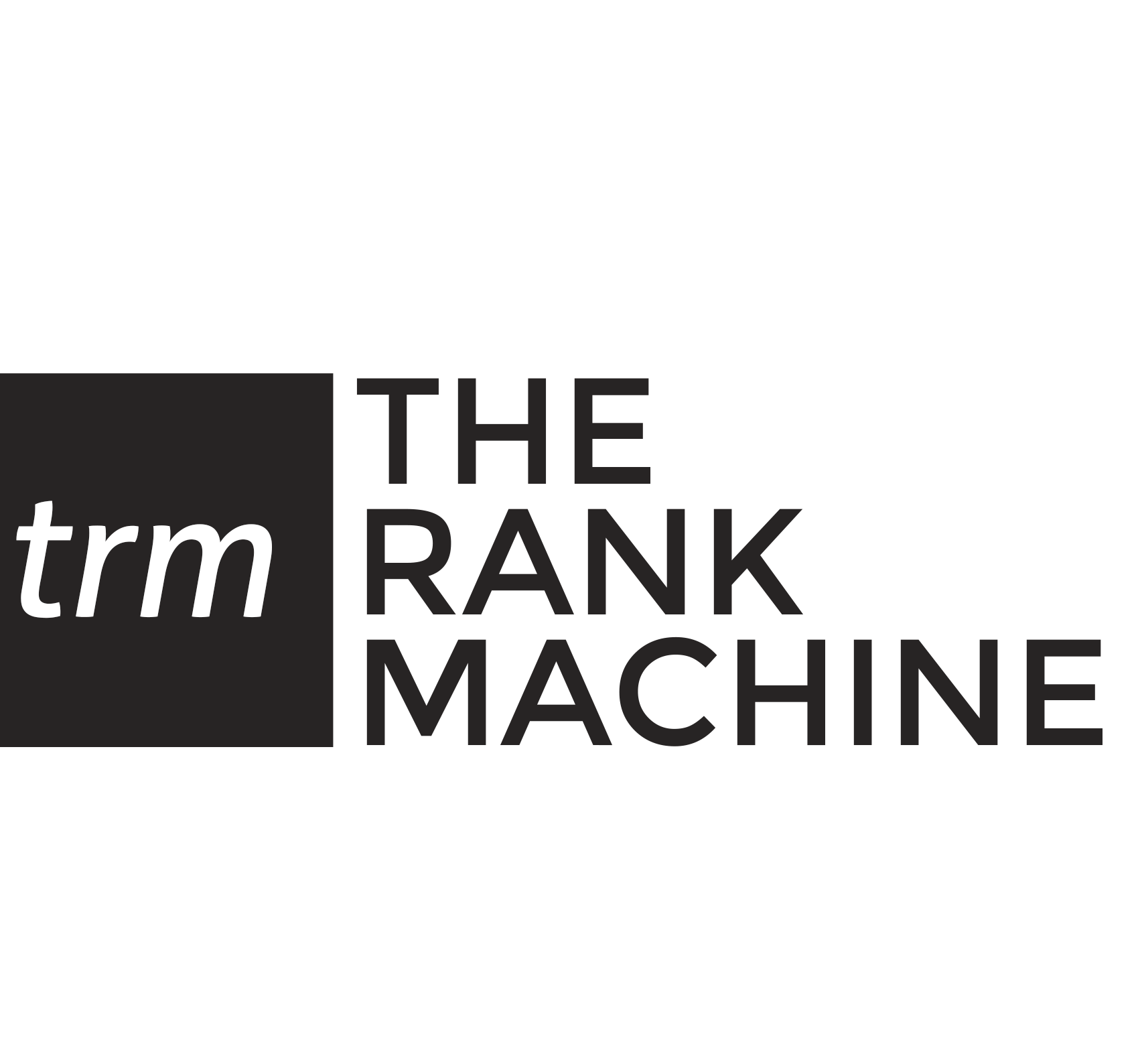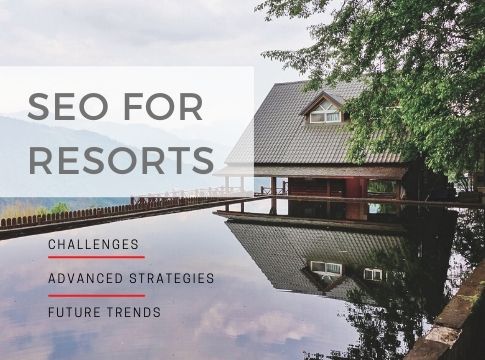How to do SEO for Resorts? Proven Strategies to Boost Your Traffic
The travel industry is one of the most competitive verticals in the search space. Doing SEO for small to medium resort websites is becoming more challenging day by day.
We as SEOs need to decide which approach works for our niche & accordingly adapt to the ever-changing travel trends (keeping in mind the Algo changes)
In this blog, we will dive into the advanced strategies that SEOs can use to rank their resort higher in search engines for the right set of keywords.
Below is the layout of what we will be covering in the blog:
- Current Challenges
- Rising competition in SERP
- Why are Listicles preferred Over Individual Resort Websites?
- Keeping up with Traveller’s expectations & Search Engines
- How to Overcome these Challenges?
- Content Strategy
- Website UI/UX
- Doing Technical SEO, right
- Off-Page Strategies
- Beyond Google
- Current & Future Trends
- Summary
Before we start with the SEO strategies, let’s examine why ranking on the first page for individual resort or travel websites has become more challenging than ever. And for this, you don’t have to blame Google more than your competitors.
Chapter 1: Current Challenges
Challenge 1 : Rising Competition in SERP Landscape
It is no secret that organic results CTR has significantly taken a hit, thanks to the 4 Paid Ads at the TOP in search results. Additionally, SERP features such as Featured snippets; People Also Ask box, Q&A on Google, Top Stories, Youtube videos carousels & changes in SERP landscapes have pushed organic listings down (not to forget “Passage Indexing” coming up next)
After the February 2016 update, the SERP layout changed completely. Ads covered the crucial 1st Fold (first scroll) on Mobile, dominating the top 4 critical positions & killing the organic CTR & clicks.
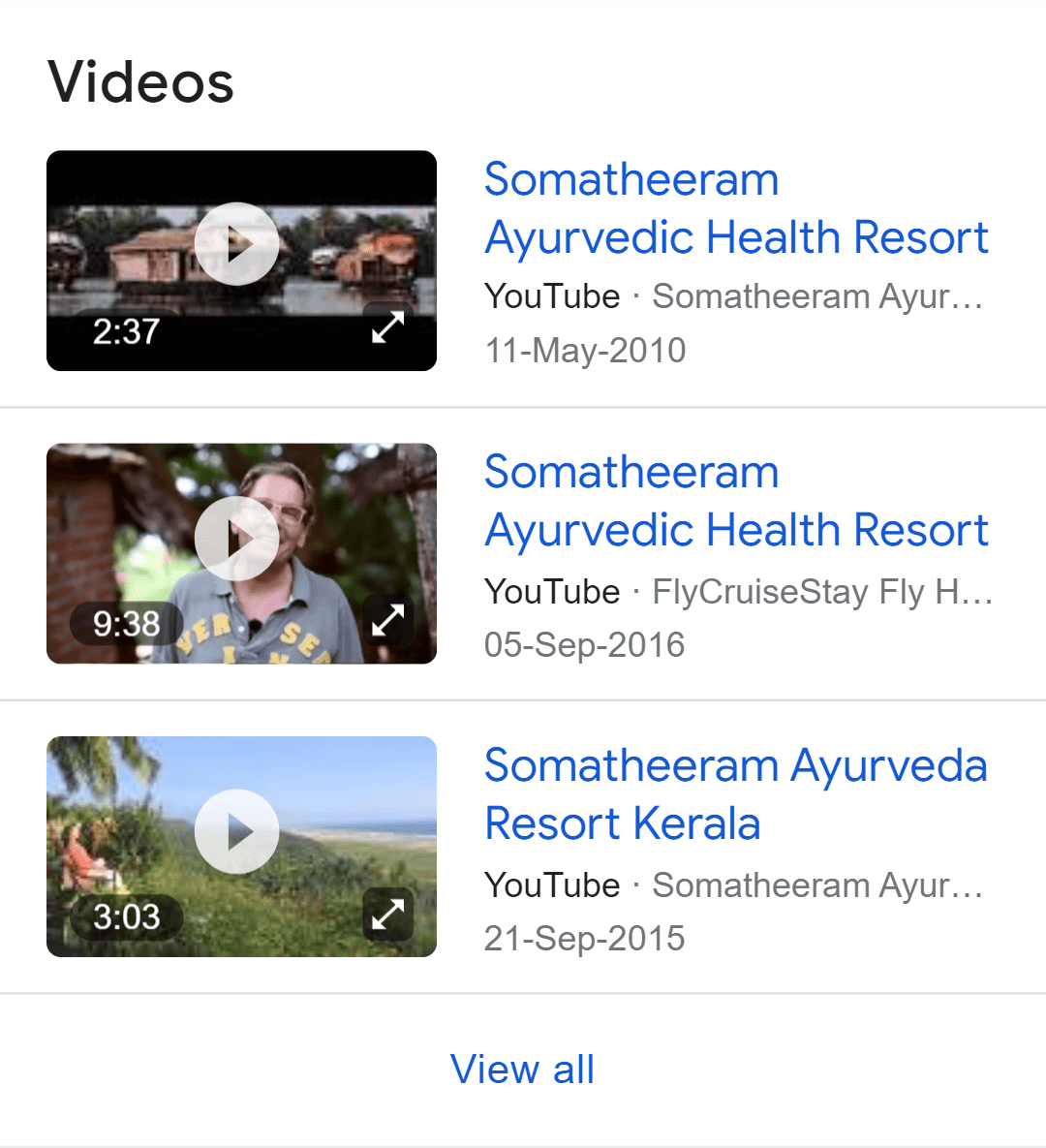
Competition is tough on Bing too. The first four results are Ads followed by Bing’s map results which users can use to check booking availability & compare prices in SERP itself.
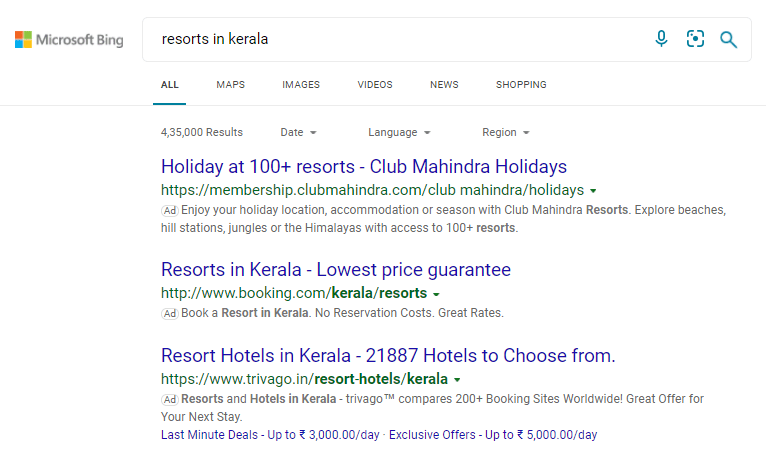
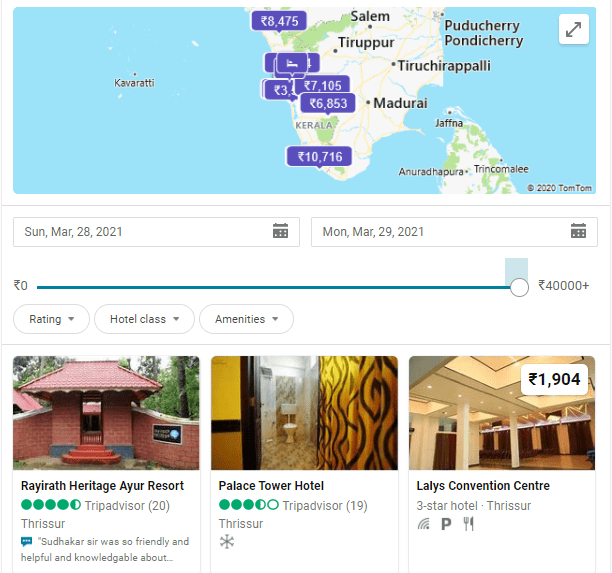
Challenge 2 : Preferencing Listicles Over Individual Resort Websites
Have you noticed the types of results ranking in Google for your targeted generic queries? They are a mix of listicles & brand websites.
A user looking for a yoga resort would hit a query like – “yoga resorts in India” or “best yoga resorts”. It would get results in the form of listicles from aggregators like MakeMyTrip, TripAdvisor or Goibibo and 2-3 individual websites.
For these types of queries directly relevant for any resorts, 70% of the results consist of listicles and clearly shows Google giving prominence to listicles over individual brand websites.
Why do Google/Bing favour listicles?
- Google knows that users love exploring options (which are provided by listicles)
- Listicles have more in-depth & detailed content, maybe a good backlink profile & varied options to choose from.
- Google favours them with the argument that users also research various websites to compare alternatives and prices before booking.
It is difficult for a resort website to outrank a well-written listicle blog post (for specific queries.)
Does this mean individual resorts have no way out? Heck, NO!
You can rank on the top as well by collaborating with these top-ranking listicles.
Outreaching the top ranking blogs or aggregators & getting the resort listed on their websites is the best option for gaining brand exposure (instead of fighting with the bush for no results).
This can be an excellent opportunity to attract relevant referral traffic, high-quality & contextual backlinks.
Chapter 2: How to Overcome SERP Challenges?
In the previous section, we wrote about the challenges that SEO faces, but we need to find a way to overcome them most smartly.
2.1 Get Ranked in the Featured Snippets-
Featured snippets can increase organic CTR significantly. Many factors decide if a page can appear in featured snippet –
Most of the results are ordered or unordered lists, short paragraphs & tables. You must structure the content properly by using an HTML table, HTML list or relevant heading tags.
Actionable Tips:
1) Check your keyword rankings to look for any first page rankings that trigger a Featured Snippet. Edit/Update your content in a way that even your page is considered for the feature.
2) Don’t blindly copy the competitor but think to provide value. For example, if you have a chunk of text that answers a query, but if it’s not structured in pointers, you should break down the content and see if Google features it.
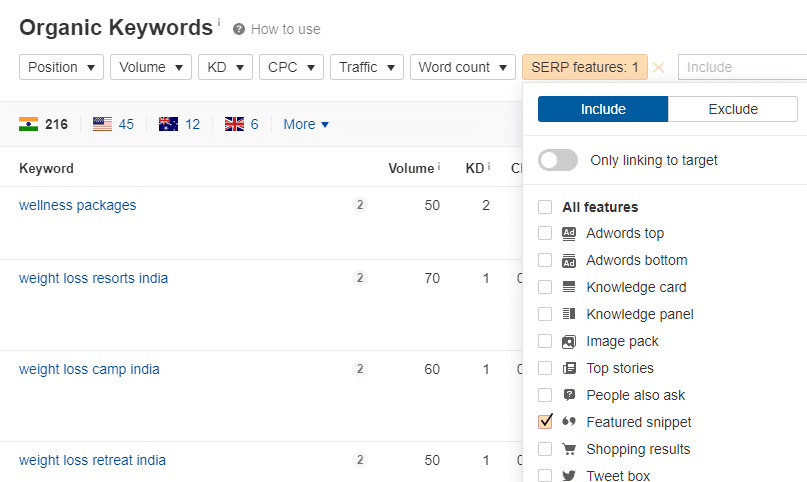
We optimized our resort’s landing page meta tags & layout that got us in the featured snippet.
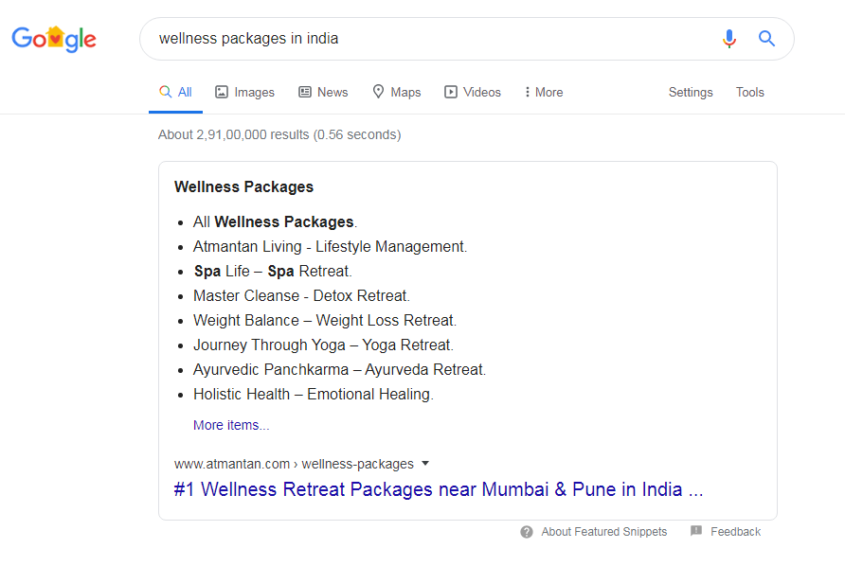
2.2 Utilise PAA Box-
PAA box gives you keyword ideas that you can select to target in your pages as Q&A’s. If you get a relevant question from here that your blog can answer, the page can appear in the PAA box.
Actionable Tips:
1) If you see a common query which the user has related to your brand or the keyword you are targeting, add them as FAQs on the page.
2) Use this fantastic tool to get the queries from PAA box: www.alsoasked.com.
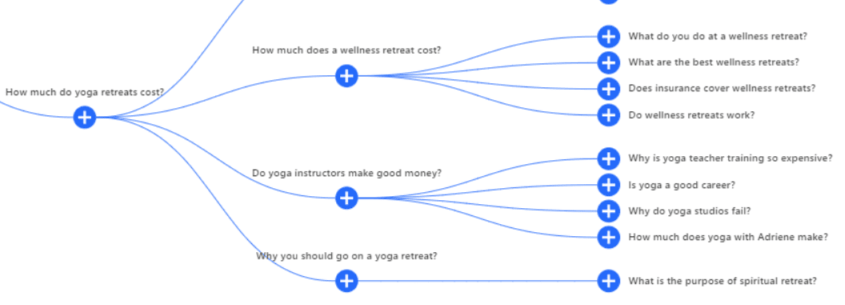
2.3 Utilize the Local Pack With Local SEO
Local SEO is about optimizing for local or near me searches. A major chunk of local searches has the intent to look for nearby resorts for a weekend or long stays (for example keyword – spa resorts near mumbai). Local SEO makes your business visible on Google Maps, Bing Maps & Apple Maps.
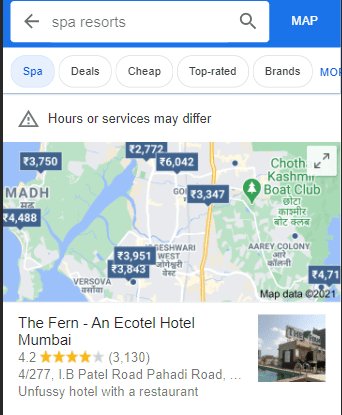
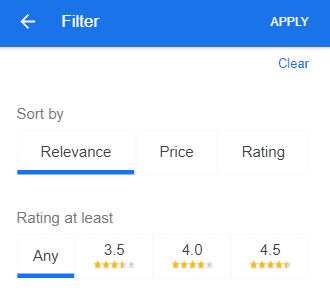
Actionable Tips:
Optimising & keeping your Resort’s Listings on Google My Business, Bing Listings & Tripadvisor up to date to help in getting more traffic and build trust for your business
GMB Optimization Tips for Resorts –
- Business Category – We have observed many resorts choose the primary category as ‘5-star hotel’. If you are in a specific niche, there are plenty of options to choose from for resort listings:
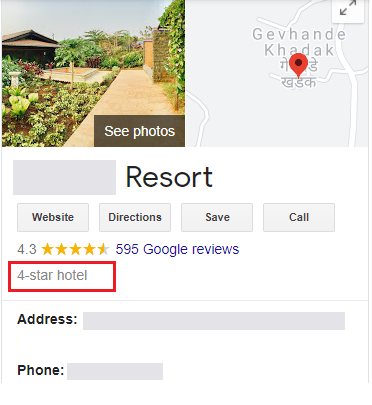
A Resort GMB with a hotel category
2. Keywords – Use your targeted keywords in your business Title & Description.
3. Services –
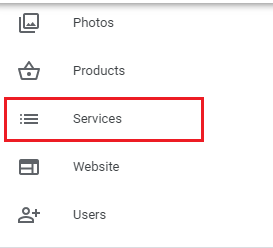
Add the resort services in the GMB Services section. (if the option is available for your profile)
4. Earn Reviews & Maintain your Ratings

Why are Reviews critical?
- Google considers the quality of reviews when ranking the GMB listings & travellers read the reviews before making a reservation.
- Similarly, make sure you reply to each review you get from your customers.
Pro Tip for Getting More Reviews:
1) You can add the GMB review scanner in each of your resort rooms so that users can quickly scan it and give their reviews.
2)When your customers bid farewell to you, make sure you ask for their review in the “Thank-you” email or text message.
Bing Listings Optimization Tips:
The Google listing is a must-have & Bing listing is a nice-to-have for Local SEO. Monitor your Bing traffic regularly as it can be an essential part of the organic search traffic for you.
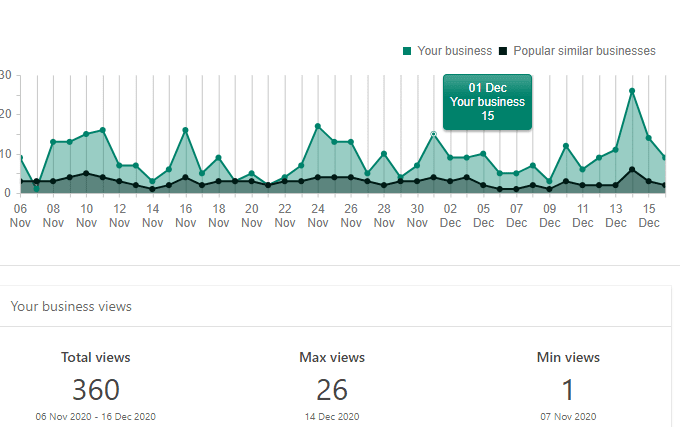
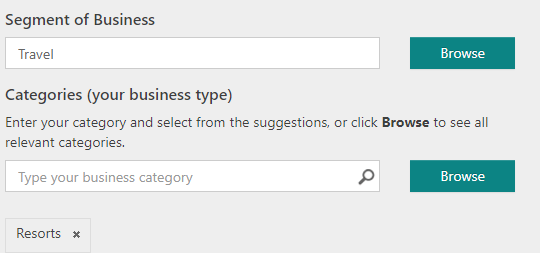
Bing categories are different from Google’s. The resort subcategory is available in the travel category. Make sure you select the correct type.

Two subcategories in it are beach resort & golf resort
Tripadvisor Optimization –
Start with a free Tripadvisor listing & promote it with some advertising budget.
Best Practices:
- Target your keywords in the business name & description.
- Add your services & brand’s credibility in the description.
- Track your ratings, write unique & personalized replies to user reviews.
- Update your profile & images with the resorts’ amenities
- Ensure that you add the correct business category
2.4 Utilise the Youtube Videos Carousel Feature
Optimize your Youtube video & it can rank in the videos carousel.
Youtube SEO –
SEO’s should optimise Videos for Youtube as well as Google Search. Resort websites can get a fair amount of traffic from the Youtube video carousel feature on the results page.
- Add a compelling, keyword-optimized title to your video that can increase the video CTR.
- A detailed description of the video with good thumbnails also impacts the performance of videos.
Actionable Tips –
1) Adding videos on your landing pages with the video schema makes your video eligible to be featured in the Videos carousel along with the Google Discover results.
2) Collaborate with Youtube Travel Influencers and ask them to record/review their experience with your resort to adding it to their Channel. With the right video title and tags, these videos can appear for your brand searches, and users can have a virtual experience of your resort.
Read this guide for more ranking factors & tips on Youtube SEO.
2.5 Getting Featured on Listicles
Listicles can be your foe because they can outrank individual resort websites, but they are friends too since they can refer to the correct audience for your website. Listicles are top-ranking results in the Google search (for your target queries) that get some good traffic. Getting your resort listed on them can be beneficial for brand awareness and referrals
Actionable Tips –
1) Find a relevant query that ranks listicles in search results, for example, “yoga resorts in india.”
2) List down the listicles & find the author’s email address or concerned person in the content team.
Draft a personalized email & pitch your prospect about getting listed in their article.
Pro Tip –
Don’t send the same email to every author. Make your outreach personalised so that the author values your services and consider it. Keep on testing different strategies & email pitches as you never know which method can do wonders for you.
Here is a blog if you want to learn more about email outreach
Chapter 3: Content Strategy
3.1 Choosing the right set of keywords
Use tools like Keyword Planner, Ahrefs, Answer the Public, Google Trends to find your target keywords.
Selecting the right keywords is crucial as you might end up targeting competitive keywords for which you will have a hard time to rank.
For example, our client is a Luxury health & wellness resort that offers premium services. We targeted queries that contained the word “luxury, wellness, yoga” and not just users looking for any usual resorts. This helped us in ranking for relevant and less competitive keywords
Actionable Tip –
Generic and high volume keywords have many potentials and a lot of competitors, given the scenarios mentioned above. You must first find your niche or your resort’s USP, which can help you stand out from the competition. Once you know this, target the users searching for these specific keywords, and you will get the relevant audience.
3.2 Blogs Strategy
Long-form content such as blogs can be a good source of organic traffic to your website if you provide in-depth and well-researched content that aligns with your resort services.
| Parameter | Keywords Set 1 | Keywords Set 2 |
| Example Query | weight loss through yoga, meditation for anxiety | yoga resort near Mumbai or weight loss resorts in india |
| Keyword type | Informative | Transactional |
| Search intent | Learn how to treat the problem (less specific) | Research & book a stay at a health resort (more specific) |
| Competition/ Ranking difficulty | High (falls in YMYL category) | Medium (relevant for resorts) |
For our client, we classified two sets of keywords for our content strategy as shown in the table –
The first type is where we consider that the health problem is to lose weight, treat anxiety or improper sleep habits & hence we would write a blog that will help users overcome these health issues. This would allow us to reach our potential customers who do not know about our resort services, which can be a possible cure.
The second type comprises queries that are used by users who are in their final stage of the purchase funnel or decision-making process (they have decided to book a stay at a health resort).

Focusing on the right set of keywords for blog topics & its structure helped us to rank a few blogs with a featured snippet
3.3 Individual Landing Pages
Depending on the resort type, its services & the Unique Selling Point, the landing page content will vary.
The resort can be on the beach-side or located on a hill station or beside mountain ranges. It may be a honeymoon or family-friendly resort, adventure, golf or a theme resort; you need to identify the main USP that differentiates it from others.
This point has to be brought up in the page content clearly.
Travellers look to escape from the city chaos & if the resort’s location is serene, surrounded by beautiful valleys or a charming beach, that’s a great advantage.
Recently, we noticed that our health resort client’s competitors started improving their page content. They were publishing in-depth content for their health retreat packages, its benefits, personalized health goals & also boosting the user’s trust & experience.
To match the competition, we made critical updates in our landing page content like –
- Highlighting the health benefits & goals of the retreat package. This helped to make content more engaging & personalized.
- Highlighting expert healers (like qualified yoga instructors or spa therapists). This is helpful to boost the credibility & trust of the client in the eyes of Google & website visitors.
- Adding in-depth information for the retreat treatments & therapies, like explaining the five therapies in the Yoga package
- Adding a doctor’s video explaining how the therapies can benefit users. Videos are more appealing to users & helpful for those who prefer video content over reading long content.
How to improve your landing page experience:
- Build Credibility – Utilize your influencer & celebrities association to boost the resort creds. For instance, you can experiment with adding the celebrities reviews video on your landing pages. Don’t forget to track your improvements if these changes help your rankings or user engagement & conversion metrics.
- Visual content – Add videos that depict the unique story of the resort & different services. Users prefer a graphic or video form of content because it’s easy to understand.
- Amenities Images – Add high-quality images to give an inside look of the resort amenities.
- Internal linking – Use Ahrefs to find internal linking opportunities. This helps to flow the link equity to internal pages.

Chapter 4: Focus on Providing Best Website User Experience
Planning a holiday can be a stressful task for travellers.
Fifty-five per cent of travellers we surveyed agree that they have to check too many sources of travel information before making a decision & 38% of travellers would likely pay more for services if a travel brand tailored its information and trip experiences to personal preferences.
https://www.thinkwithgoogle.com/marketing-strategies/search/consumer-travel-booking-preference-statistics/
4.1 Mobile Experience
A majority of travellers end up making last-minute reservations using their smartphones. They can research places or resorts & can even make a reservation on their phones. This clearly indicates that mobile’s impact on the travel journey is higher than ever before. Customers can start their research, make an enquiry, sign up for newsletters & convert from the mobile itself – provided that your mobile experience is user-friendly & user-centric.
Easy search functionality and a simple booking process are important features by mobile users.
https://www.thinkwithgoogle.com/consumer-insights/consumer-trends/consumer-travel-smartphone-usage-ease-search-factor/
- Load time – A high load time will result in users exiting your website. Ensure your website speed is optimized for mobile users.
It directly iṁpacts the user engagement metrics like session duration, bounce rate & exit rate.
- Navigation – Mobile navigation should be designed to fit in the small screen, allowing the user to navigate the content easily.
- Easy-to-Grasp content – The content should be broken down into points or sections. Users are impatiently looking to scan the main highlight on a page & may exit the page without reading your essential content. Using heading & bullet points helps improve readability & Google can better understand the content (also, it can help you get featured in a snippet, remember?)
Actionable Tip –
Use a Mobile-friendly test or responsive design checker to check if the mobile version is responsive. Page Speed Insights, GTMetrix & Google Analytics will give you valuable data on page speed & Core Web Vitals metrics.
A one-second delay in mobile load times can impact conversion rates by up to 20%
https://www.thinkwithgoogle.com/intl/en-gb/marketing-strategies/app-and-mobile/making-mobile-priority-5-steps-successful-digital-transformation
4.2 User Behavioural Analysis
Users need help in choosing the right packages or accommodation & we need to help them in every possible way. Tailor the experience to a user’s desires, and expectations & the users are more likely to return to the same service again.
For our luxury resort, we realised that the landing page had all the information about the packages. However, users still had queries on choosing the retreat according to their health condition, the number of nights they are available, wellness objectives, etc.

We suggested that they create filters with all the above options and according to the user’s selection, it displays the package recommendations.
Understanding the user behaviour using the right tools can give you deep insights into the issues and breaking points for your website. By keeping track of the user behaviour, you get super-useful insights to improve your customer journey.
You can analyse your user-behaviour using various tools such as Google Analytics, Hotjar, MS Clarity, etc.
How to use Google Analytics Insights for User Behaviour Analysis?
Create a funnel for your booking engine or leads form & analyze the reason for significant drop-offs at a particular step.
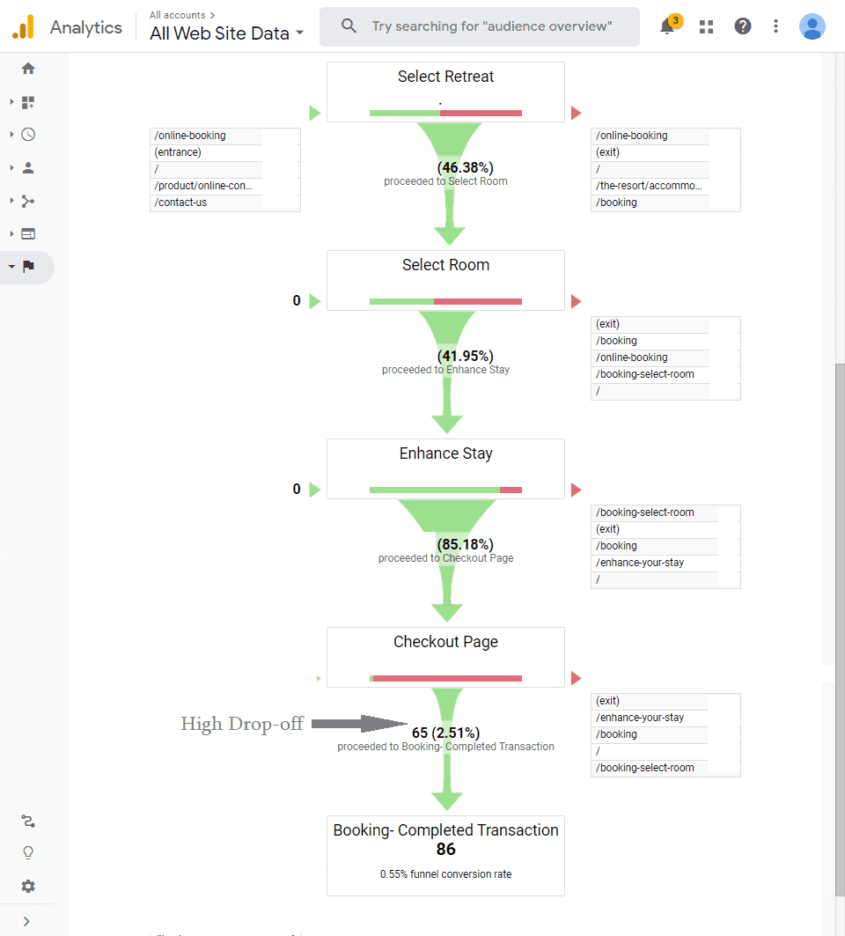
There can be many friction points in the funnel that are causing the drop-off at each step
“Friction on a mobile site when completing a booking can lead to travellers trying another site.”
https://www.thinkwithgoogle.com/consumer-insights/consumer-trends/consumer-travel-smartphone-usage-friction-bounce-factor/
Common issues which can go unnoticed on the website:
- Not secured internal pages, Mixed content issues showing “Not Secure” in Chrome
- Less detailed no content on important pages like room/package details that force users to go back to the service or accommodation page
- Poor mobile navigation & experience
- Limited payment options
- Low trust factors
- High load time
- etc..
Long checkout forms can also cause friction in the user journey.
Adding a progress bar is a good practice as it helps the users to track their checkout journey.

How to use Microsoft Clarity for Behaviour Analysis?
Clarity lets you spot additional insights that help you investigate the actual pain points of users. The free tool by Microsoft provides free heatmaps & user session recordings that can help you spot issues that users are facing.
Try a Clarity Demo & install it for your website now.
Haven’t set up tracking yet? Read our detailed guide on How to Setup Google Analytics
How User Feedback can Help in Improving UX?
The way we perceive our customers & the way they interact with our website or services is completely different. Avoid guesswork & hear valuable feedback from the users directly.
Actionable Tip –
Start with a simple Hotjar survey & analyze the user’s perception of the website experience.
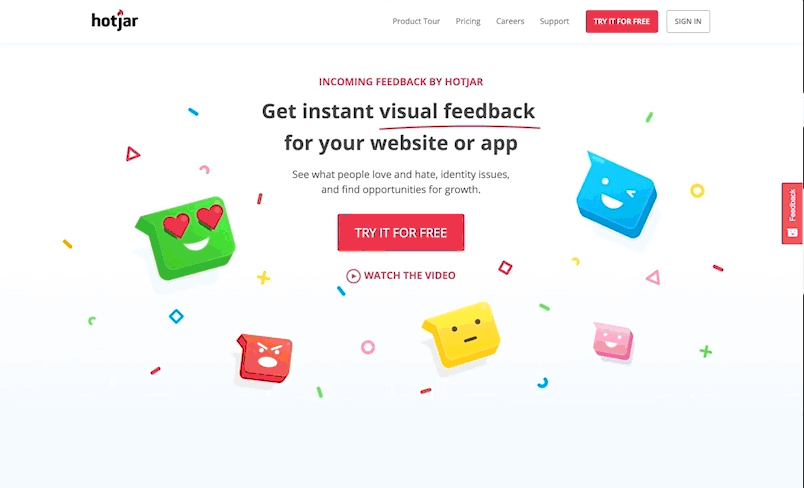
4.3 Conversion Optimisation
Conversion optimization focuses on improving the conversion rate of your website. Whether it’s a small button design or the content copy, it impacts the user’s purchase decision. CRO is a trial-and-error method that lets you experiment & find out which version of the landing page converts the best.
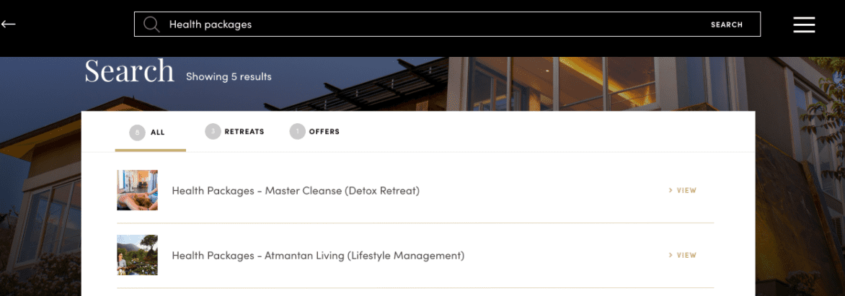
Functionalities like a search bar, guest checkout for a booking engine, chatbots also impact the conversions & how users interact with the website. Conversion-focused content, irresistible CTA buttons, interactive or engaging content copy plays a role in improving the conversions.

CRO Best Practices
Highlighting the following points on the landing pages can increase credibility & trust for the visitors.
- Awards won by the resort.
- GMB & TripAdvisor reviews snippets
- Mentions & feature on popular publications
- Celebrity & customer testimonials
- Videos of resort experience
Videos that tell a story or your resort experience or customer testimonials work well as they are more appealing for users.
Here is a good article on Conversion Rate Optimisation by Backlinko.
Chapter 5: Technical SEO
Search engines need to crawl, index & rank website pages & ensure the good health of our website. Search engines are good at discovering content, but they are far from perfect & this can impact your organic visibility. Technical SEO includes optimizing your website to meet technical requirements crucial to getting indexed and ranking in the SERPs.
A reliable website structure is the foundation of your SEO or marketing efforts. If the technical SEO is messed up, even the best website will not rank.
Some of the significant things you need to take into account –
- Website architecture & navigation
- Sitemaps
- Broken links & redirects
- Indexing & crawling issues
- Hreflang tags
Actionable Tip –
Run a free Ahrefs Site Audit or a Bing Webmaster Site Scan that will help you identify issues & improve the technical health.
5.1 Add Structured Data or Schema Markup
We have seen many resort sites with an irrelevant or incorrect schema like lodging business, website or hotel schema type. This is automatically added due to Yoast or similar SEO plugins as a useful plugin should do.

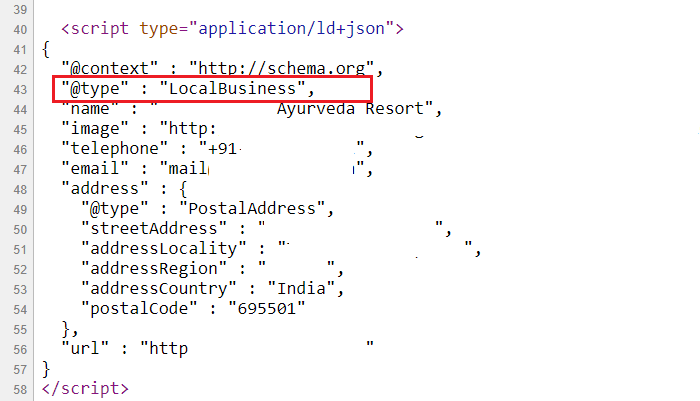
Use this code in functions.php file to disable auto generated Yoast schema –
add_filter( 'wpseo_json_ld_output', '__return_false' );
A resort schema is more relevant structured data to add to your resort website. Make sure you also add these attributes in the resort schema –
- numberOfRooms
- telephone
- foundingDate
- aggregateRating
- description
- address
5.2 International Targeting
Many SEOs have confusions about how search engines index & rank content for different languages & countries.
Different search engines have other guidelines, which change over time & it becomes difficult to adapt to them
Example – Bing and Baidu use the content-language HTML attribute instead of Hreflang tags to rank country-specific pages.
Many technical considerations are included, which can conflict with the brand’s needs or priorities. There are few things to look at ccTLD, gTLD, canonical tags, content translation, IP sniffing, auto redirects & server hosting.
Moz has busted some common myths on Hreflang here
But before considering this, ask yourself:
Should you expand beyond your country?
Yes, if your market or target audience exists or your inquiries, bookings come from international audiences. You cannot rank everywhere; you need to figure out the top countries you want to target and create landing pages for them.
We recommend consulting an SEO expert if you are planning to go for International SEO.
Try Google’s market finder tool that recommends opportunities in the global market.
Chapter 6: Off-Page Strategies
Resorts need eyeballs to increase brand awareness and exposure. It not only helps you get traffic but also boosts your website’s popularity & trust for search engines. Google uses On-Page & Off-Page signals both to calculate the popularity and trust of a website & hence Off-Page optimization should not be neglected.
Off-page is a broad area to focus on & we need to focus on strategies that can have the most impact.
The way we look at Off-page optimization is not just limited to link building but a variety of other things which can be done off the website. It includes Digital PR, email outreach, influencers collaboration, etc. – anything which is done off the website to increase exposure or brand reach.
6.1 Link Building
Major link building strategies include mentions outreach, guest posts, Digital PR, & listicles outreach.
We have tried all the major strategies for our resort & we are sharing our experience which might be helpful for you.
Before outreaching we considered the probability, impact & feasibility of outreaching & getting a backlink from the prospect –
- What is the probability that the prospect will read my mail (less for people who get a lot of repeated link building emails from SEOs)
- How much referral traffic, brand exposure, and leads our resort can get?
- How relevant is the prospect website for our audience? (Context)
- How much domain authority the prospect website has? (Ahrefs & Moz tools can tell this)
- Does the prospect’s website have an internal organizational policy of not linking to other brands?
- How is the ranking performance of the page where our resort is going to be listed? (Top-ranking listicles should our priority)
- How to justify if a high DR or popular website demands some $ in return?
Some prospects may even ask for a free stay at your resort, in exchange for a link, social media post promotion or a PR article.
It’s up to you to figure out what works best for you.
6.2 Web Mentions Outreach
Not all web mentions are linked, but they are probably the easiest source to get a backlink from. Positive web mentions are votes to your websites & are crucial in ranking algorithms.
Ahrefs has a good guide to help you find your web mentions & convert them into links.
Set custom Google or Ahrefs alerts for your resort brand keyword. Reach out to the website with a personalized email & ask them for a backlink to your website.
6.3 Digital PR
Digital PR is a common way of promoting your brand. Digital PR & guest posting strategies can have a high reach & are helpful to boost a website’s popularity.
If a resort has mentions or links by big publication houses like Forbes, Vogue, The Guardian, it will have more domain authority as backlinks equal votes & it can increase your organic visibility.
For example, a famous celebrity’s visit to your resort will be noticed by news publications & it will be an opportunity for you to get good PR coverage.
6.4 Social Proof
We all know that Social Media doesn’t impact our rankings directly but people do look at the resort’s social handles for popularity and follows. Google also takes into consideration 3rd party reviews, trust & popularity signals on the brand’s social media channels.
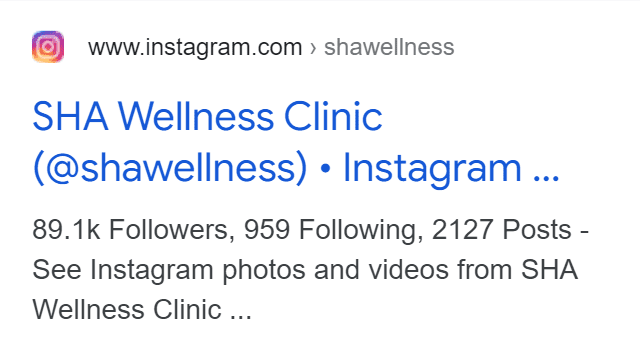
A resort’s Instagram account in SERP
- Social media posts are crawled by Google & also displayed for brand & generic queries in SERP.
- Consumers check reviews on social media channels like Facebook that can influence their buying decisions.
- Having a high number of followers and a verified profile on social media builds trust for your resort.
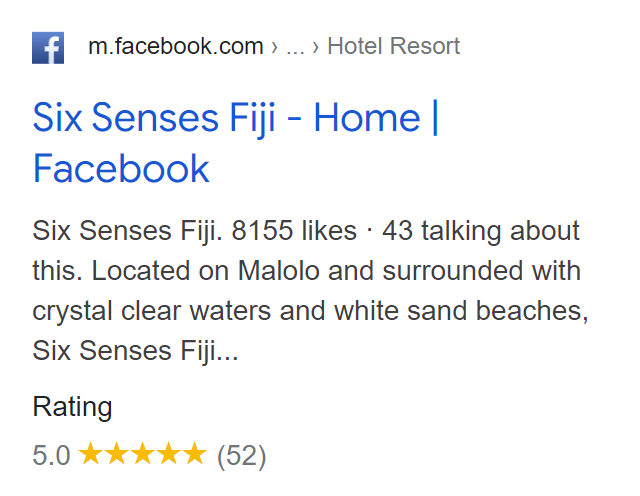
Facebook page with star rating results in SERP
Off-Page involves thousands of other things. It is the job of SEOs to prioritize the tasks that would have the most positive impact on the brand.
Chapter 7: Beyond Google
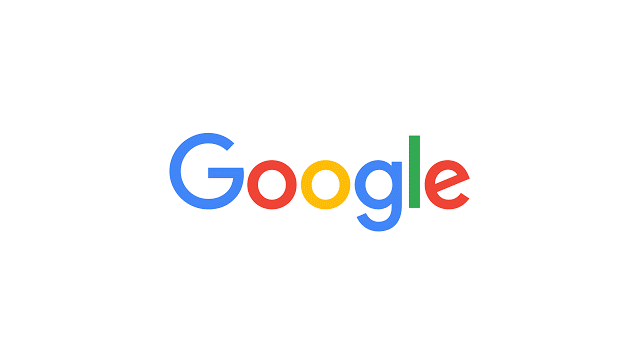
Google is definitely the most used search engine in the world but has strong competitors too. Users are slowly realising about privacy & how the tech giants treat & sell their personal data for advertisements. This is creating a small room for other search engines.
Searches for “online privacy” grew by more than 50% globally in 2020 compared to the previous year
DuckDuckGo clocked 100 million searches/day. Ahrefs is planning to build a search engine whereas Apple is allegedly working to build its own search engine. Salesforce CEO has invested in You.com, a privacy-focused search engine that is accepting early registrations from the users.
Bing is a widely used search engine in the U.S & U.K whereas Yandex & Baidu beats Google in Russia & China respectively.
You may discover your potential international or domestic customers searching on Bing or Yandex, so it is better to optimize the website for these top search engines as well.
Chapter 8: Future Travel Trends
In this digital space of the 21st century, things change at a rapid pace. Though the future of tourism or travel can’t be predicted, marketers must be up-to-date with the latest travel trends that shape the travel marketing space. To thrive in this competitive industry, we need to be ready to respond quickly when consumer trends suddenly shift.
A majority of advertisers use third-party cookies & Google is experimenting with new methods to deliver more private & secure web. Google has a detailed article to prepare your business for this change.
8.1 Voice Search
Voice search happens on smart home speakers & mobile assistants like Google, Siri, Alexa or Cortana. The current stats do not indicate that the voice search is huge but it is consistently increasing. 20% of queries in the Google App are activated by voice. Travellers can use voice search for searching information & may book their reservations too.
Don’t believe us? Watch this –
8.2 AR/VR Experience-
Many brands are using VR tours to help the customers experience accommodation or interiors, restaurant interiors, outdoor tourist attractions and more with the comfort of their home.
Won’t this create an impact on the traveller’s decision-making process?
8.3 Online Services
As the pandemic hit the global tourism industry, this trend boomed like anything. Wellness or health resorts started offering online consultations to their customers.

Summary
SEO for travel is unpredictable and has drastically changed today. There are new marketing challenges as well as opportunities in the SEO & digital marketing space.
Don’t follow every tip blindly; filter the ones that best work for you and benchmark the current data to witness the improvements. Using the methods mentioned above, we could drive a 100% increase in international visitors to a resort client of ours.
Do you have any questions about how digital marketing can benefit your resort? Do you have anything to share with us?
Reach out to us or ask away in the comments.
